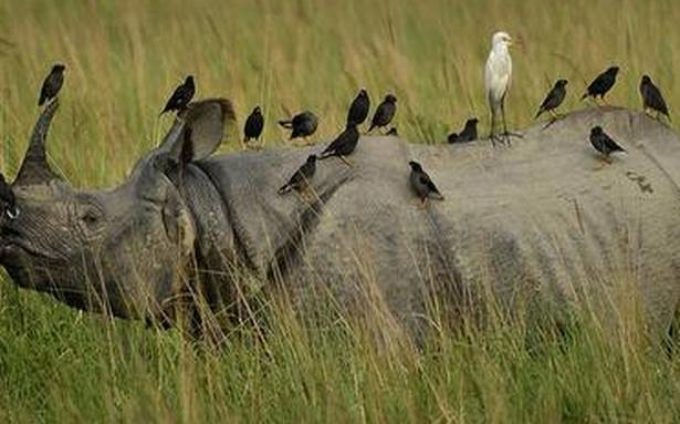In about a week’s time, an entire forest division in Assam will start moving 160 km northeast. The one-horned rhino of the Kaziranga National Park (KNP) is the reason for this “long march”.
On August 14, Assam’s Environment and Forest Department issued a notification saying the KNP had been split into two divisions — the existing Eastern Assam Wildlife and the new Biswanath Wildlife — for “intensive wildlife management”.
The Brahmaputra separates the two divisions straddling a total area of 1,030 sq.km. Kaziranga had an area of only 232 sq.m when it began its journey as a proposed reserve forest on June 1, 1905.
The KNP officials said the creation of the Biswanath Wildlife Division, with headquarters at Biswanath Chariali in northeastern Assam, will entail relocating the Central Assam Afforestation Division at Hojai 160 km away. In fact, the afforestation division has been renamed a wildlife division.
All these years, the KNP was being administered by the Eastern Assam Wildlife Division with headquarters at Bokakhat on the southern bank of the Brahmaputra. This division was formed in 1966, two years before the State government designated Kaziranga a national park, though it was given the official status in 1974.
The Eastern Assam Wildlife Division had five ranges — Eastern or Agratoli, Kaziranga or Kohora, Western or Bagori, Burapahar and Northern — until the split. All except the Northern Range are on the southern bank of the Brahmaputra.
Now, the Northern Range, with an area of 401 sq.km, has been upgraded to the Biswanath Wildlife Division with four ranges of its own — Eastern or Gamiri, Central or Biswanath Ghat, Western or Nagshankar and Crime Investigation Range.
“Much of the rhino poaching was being done from the northern side of the Brahmaputra, which was difficult to manage for officers posted on the southern side. Splitting the KNP into two divisions means there will now be two divisional forest officers under one director (based in Bokakhat near the Agratoli range), ensuring better vigil,” Assam’s Principal Chief Conservator of Forest N.K. Vasu told The Hindu.
“We will start moving to Biswanath in six or seven days. Not all the officers and staff of the division to be shifted might be suited for wildlife protection, so there could be transfers. But at the end, Kaziranga will now have many more hands,” he said. He could not provide an estimate of the number of people to be shifted to Kaziranga.
The KNP, a UNESCO World Heritage Site since 1985, currently has a staff strength of nearly 1,300. Wildlife officials estimate that the park would require at least 3,000 men if they were to be deployed in eight-hour shifts.
Between 2015 and February this year, 74 rhinos fell to poachers in Assam. Many of these rhinos were from the KNP, though there have been fewer cases of poaching since 2017.
According to the last rhino census in March, the KNP has an estimated 2,413 rhinos. The park also has 57% of the world’s wild water buffalo population, one of the largest groups of Asian elephants and 21 Royal Bengal tigers per 100 sq.km – arguably the highest striped cat density.



Leave a Reply